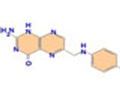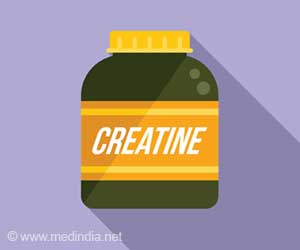Chronic pain may be resolved by taking vitamin D treatment, even when pain management pills do not work.

Vitamin D enters the circulation and undergoes metabolic reactions in the liver and kidney to activate hormones that increase calcium absorption thus increasing the availability of calcium. In the liver, vitamin D is converted to 25-hydroxy cholecalciferol or 25(OH)D, which is then converted in the kidney to 1, 25(OH)D.
Phosphorus absorbed in the intestine and parathyroid hormone regulate the production of 1, 25(OH)D in the kidney which in turn regulates calcium metabolism by increasing calcium absorption and thus normalizing blood calcium.
The Institute of Medicine of the National Academies recommends the daily allowance of vitamin D to be 600 - 800 IU daily, with a maximum intake of 4,000 IU per day. In India, however, only 10 percent of vitamin D is available through dietary sources and ICMR (Indian Council of Medical Research) recommends a daily supplement of 400 IU in adults.
Researchers from Sri Venkateswara Institute of Medical Sciences, Andhra Pradesh, India, have pointed out that the levels of 25(OH)D is uniformly low among the Indian population despite abundant sunshine.
Vitamin D deficiency is associated with a number of disorders such as metabolic syndrome, type-1 diabetes, heart disease, fragile bones, and even cancer. A number of evidence now shows that low levels of vitamin D are also responsible for diverse chronic pain syndromes including pain in the legs in older adults, post-herpetic pain, pain with sickle cell disease, headaches, joint pain, chronic back pain, diffuse bone and muscle pain.
• A 16-year-old girl with sickle cell disease having chronic pain, headache and nausea and very low vitamin D level, and unrelieved with NSAIDs, when treated with 50,000 IU of vitamin D twice weekly, with 1,000 mg calcium carbonate (TUMS) added at week 4, was resolved of all pain symptoms by week 14.
• Eight patients with tension headache and 25(OH)D levels of less than10 ng/mL when treated with 1,000 to 1,500 IU of D3 and 1,000 mg calcium daily, showed complete resolution of headache within 4 to 8 weeks.
• Treatment with vitamin D and calcium over time resolved the symptoms of osteomalacia myopathy (weakening of muscles and softening of bone due to loss of minerals) characterized by fatigue, muscle aches, bone pain, and muscle weakness and frequently found in patients who have undergone bariatric surgery.
• 1,000 to 4,000 IU of cholecalciferol daily for 3 to 6 weeks improved or completely resolved severe or disabling back pain in seven patients.
Sometimes, patients who were thought to have a metastatic malignancy were eventually found to have vitamin D deficiency which could be resolved with vitamin D and calcium treatment.
However, cases of post-herpetic neuralgia (PHN), a painful condition affecting the nerve fibers and skin, and joint pain (arthralgia) in breast cancer patients treated with aromatase inhibitor (AI), when treated with vitamin D showed inadequate results requiring further study.
Colleen Nadolski suggested the following areas of investigation regarding vitamin D:
• Dosing required for vitamin D repletion based on initial vitamin D levels needs to be investigated and guidelines established.
• Treatment targets for achieving pain relief in multifarious pain syndromes along with dosing guidelines require further investigation.
• Types of pain syndromes that do not respond to vitamin D treatment.
The researcher has advised primary care providers to screen for vitamin D levels in their patients who report chronic pain, especially when there is poor response to routine treatment. She has also advised the pharmacists to consider these relationships in counseling patients who report inadequate or diminished efficacy of pain medications.
Source: Nadolski, C. E. Vitamin D and Chronic Pain: Promising Correlates. US Pharm. 2012;37(7):42-44.
References:
1. http://www.ncbi.nlm.nih.gov/pubmed/19753759
2. http://www.pfndai.com/Draft_RDA-2010.pdf
Source-Medindia















